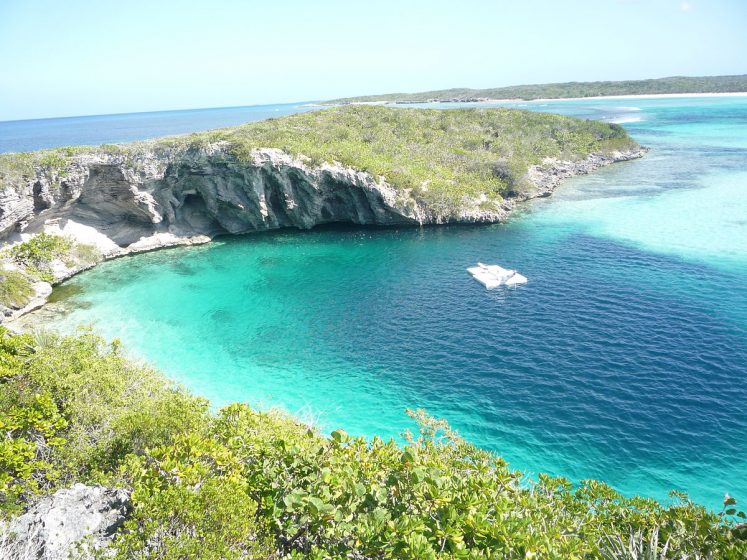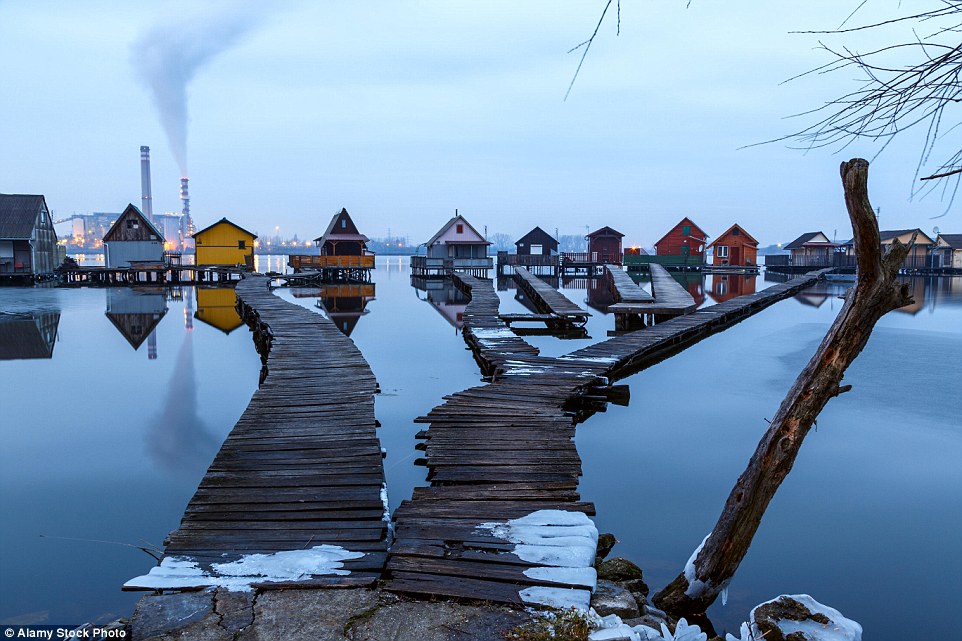Page Contents
Blue holes and caves are the most attractive place for adventure seekers. There are more than 8,500 caves in Greece and they are wonderful places to learn more about Greek history and mythology. Some caves have been used as places of worship for many centuries, whereas others were used by villagers to secrete from the Nazis. Every cave in Greece has a unique story, and each cave is more fascinating than the one before. Hence, if you are looking for the most fascinating cave, then you should visit Greece.
The island of Santorini is often referred to as a top summer vacation destination due to its location in the Aegean Sea has beautiful scenery and is ranked first due to its great locations. With its beaches covered in shiny black sand, were created 3,600 years ago by a volcanic eruption. The site attracts an enormous number of tourists every year. Our recommendation whenever going to Santorini is to stay at the all-inclusive resorts Santorini Greece due to its picturesque location and stunning beaches adorned with sparkly black sand.
Coming back to the point about Blue Holes? How do they form and what are the most beautiful Blue Holes in the world? A Blue Hole is an underwater sinkhole created by the erosion of carbonate bedrock. Its appearance seems like a dark blue circle of water on the ocean.
It developed on a bank or island containing influenced freshwater, marine, or mixed chemistry. The Halocline point of blue holes meets the freshwater and saltwater. At this point, the corrosive reaction takes place which eats away the rock and creates side passages or horizontal arms from the vertical cave.
Blue Holes once lying above the sea level thousands of years ago, but as time passes it opens to the surface and is formed composed of a carbonate bedrock “limestone, or coral reef”. The Blue holes are illustrious from cenotes in that the latter are inland voids normally holding fresh groundwater rather than seawater.
The process of dissolution of soluble rocks and intense karst activity created large vertical caves. When the ocean level rose due to the melting of glaciers these blue holes became submerged. Owing to their depth, the greater absorption of sunlight increases their depth, creates a dramatic contrast with the lighter blue of the shallows around them, and forms a natural outline that can be easily seen from the surface.
Many Blue Holes provide access to submerged cave passages. Some of the best Blue Holes examples are.
-
Dragon Blue Hole, China
-
Great Blue Hole, Belize
-
Dean’s Blue Hole, Bahamas
-
Guam Blue Hole, Great Barrier Reef in Australia
-
Dahab Red Sea Hole, in Egypt
-
Watling’s Blue Hole, San Salvador
-
The Blue Hole of Dwerja Gozo, Malta
-
Santa Rosa Blue Hole, New Mexico
-
Great Blue Hole, Belize
On the coast of Belize, a small country on the eastern coast of Central America. This country has the famous Great Blue Hole a giant marine sinkhole near the small atoll center of Lighthouse Belize City. A circular shape hole formed with quaternary glaciation when the sea level was very low. It is 1,043 ft across and 407 ft deep.
Great Blue Hole is a World Heritage site a part of the Belize Barrier Reef Reserve System. Great Blue Hole shows formation took place around 15,000 years ago. This hole is among the five best widespread spots for recreational scuba divers.
The divers are enticed by the opportunity to dive in crystal clear water with mesmerizing fishes, Caribbean reef sharks, bull sharks, hammerheads, and other juvenile fish. Discovery channel ranked Great Blue Hole as the Top Spot in the list of Most Amazing Places on Earth. Different fossils existed in blue holes, such as crocodile and tortoise fossils.

Source: Wikipedia
-
Dean’s Blue Hole, Bahamas
In the Bahamas, Dean’s Blue Hole is the world’s deepest saltwater blue hole. It is a circular shape hole at the surface with an 82 to 115 meter diameter. After descending 66 ft, the blue hole widens into a cavern with a diameter of 330 ft. This blue hole is located near Clarence Town on the coast of Long Island, The Bahamas.
It is also one of the best blue holes for the best diving and snorkeling sites. Dean’s Blue Hole formed due to underwater erosion dissolving limestone and chemical reaction. Many sea animals are to be found inside Dean’s blue hole.
Snorkelers and divers may spot snapper fish, tarpons, turtles seahorses, rays, and various colorful tropical fish. Dean’s blue hole is a different one in many ways, connected to the Atlantic through an inlet on one side and framed by cliffs and white sand beaches on the other.

Source: Wikipedia
-
Dragon Blue Hole, China
Dragon Blue Hole is the deepest blue hole in the world. It is a 987 ft deep sinkhole, with distinctive blue color water when seen from above. Almost 330 ft is deeper than Dean’s Blue. This is located 25 KM south of Discovery Reef in the Paracel Islands.
It is famous as the “eye” of the South China Sea. A stark contrast to the otherwise aqua waters that surround striking and beautiful formations of underwater entrances and extend below sea level, mirroring the appearance of a sinkhole.
Moreover, there are several freshwater sinkholes on planet earth, that are deeper than Dragon Hole. These include Mexico’s Zacatón at 1,099 ft, Pozzo del Merro in Italy at 1,286 ft, and Hranice abyss in the Czech Republic at 1,325 ft.

Source: Wikipedia
-
Guam Blue Hole, Great Barrier Reef
The Guam Blue Hole is located about 100 ft. off the west coast of Guam an island in the Western Pacific Ocean. This rare blue hole is an open chasm that begins at 60 feet and opens to the sea at 130. The scuba divers can see along the reef top some fishes like dogtooth tuna and eagle rays with dolphins and pilot whales can also be found occasionally.
It is strictly bound for skilled divers. Because the shoreline of the Blue Hole is a cliff of almost 150 ft high, hence there is no beach entrance. It is only accessible via boat. Though, besides diving, Guam Blue Hole is a paradise for photography. Also, for Corals, one has to dive at Hap’s Reef, located outside Apra harbor, or Finger Reef, inside Apra Harbor, which has a wonderful accumulation of corals.

Source: You Must See
-
Dahab Red Sea Hole, in Egypt
Dahab Blue Hole is located in southeast Sinai, Egypt on the coast of the Red Sea. A submarine sinkhole, with a depth of 328ft with a 20 ft shallow sea. It is also known as “the saddle” and 85 feet long tunnel as “the arch”. The Blue sinkhole surrounding area has plenty of coral and reef fish. And an ideal hot spot for freediving because of the depth directly accessible from shore and the lack of current.
It is considered the deadliest dive site in the world. It has claimed the lives of 150 to 200 divers. Dahab Red Sea Hole is the most dangerous with differing explanations given for its high death rate. The Blue Hole enters “The Bells” from the shore. At 26 meters from the bottom of Bells, divers do not get to see the Blue Hole arch when doing the Bells to Blue Hole dive.

Source: Wikipedia
-
Watling’s Blue Hole, San Salvador
The Watling Blue Hole is located on the Bahamian island of San Salvador. The karst feature of Watling’s Blue Hole is formed by the erosion of limestone, made of calcium carbonate, a mineral that can dissolve in water, especially in acidic water. When the limestone dissolves, it gives off carbonic acid and is even more able to dissolve limestone.
Once, the limestone dissolves the remaining part abruptly dissolves more, and results in the formation of a deep blue hole around the spot where the limestone first began dissolving. In fact, Watling’s Blue Hole has incredible water chemistry and has no freshwater anywhere not even a tiny lens on top.
Thus, this sinkhole must link all the way to the ocean to let saltwater flow in continuously to dominate the system. The sinkhole is sitting in the middle of a rainy Tropical Island, signifying that the hole must be connected to the ocean by an underground tunnel.

Source: CP
-
The Blue Hole of Dwerja, Gozo
The Dwejra Gozo Blue Hole is another popular diving site in the Maltese archipelago, in the Mediterranean Sea. This site overlooks the beautiful Azure Window and starts in a fantastic 10m wide inland sea pool which leads into a large crevice and through to the open sea.
One can see a natural rock arch with crystal clear blue waters that is your doorway leading to the open sea. Gozo Blue Hole is a 15 meters deep and 10 meters wide underwater hole connected by a tunnel to the open sea.

Source: Malta
-
Santa Rosa Blue Hole, New Mexico
The Santa Rosa Blue Hole of New Mexico is a circular bell-shaped pool for scuba diving and training. It is one of the most popular diving destinations, and is an artesian once used as a fish hatchery.
The crystal-clear water with a constant 62 °F (17 °C) temperature and a constant inflow of 3,000 US gallons per minute (11 m3/min; 2,500 imp gal/min). However, Santa Rosa’s surface is only 24 meters (80ft) in diameter and 40 meters at the bottom. Due to its high elevation, (1,407 meters), divers must use high-altitude dive tablets to compute the dive profile and decompression stops.






